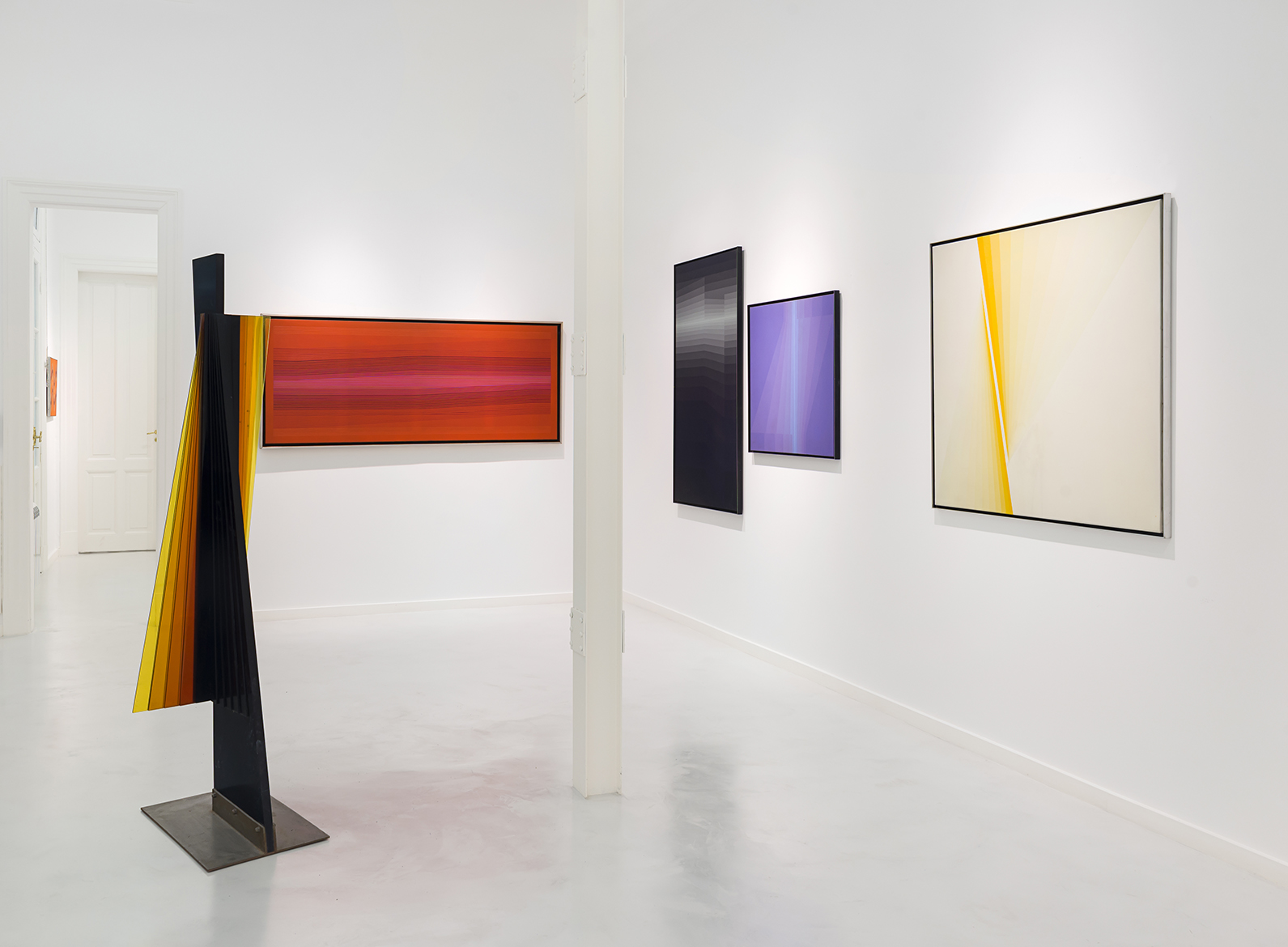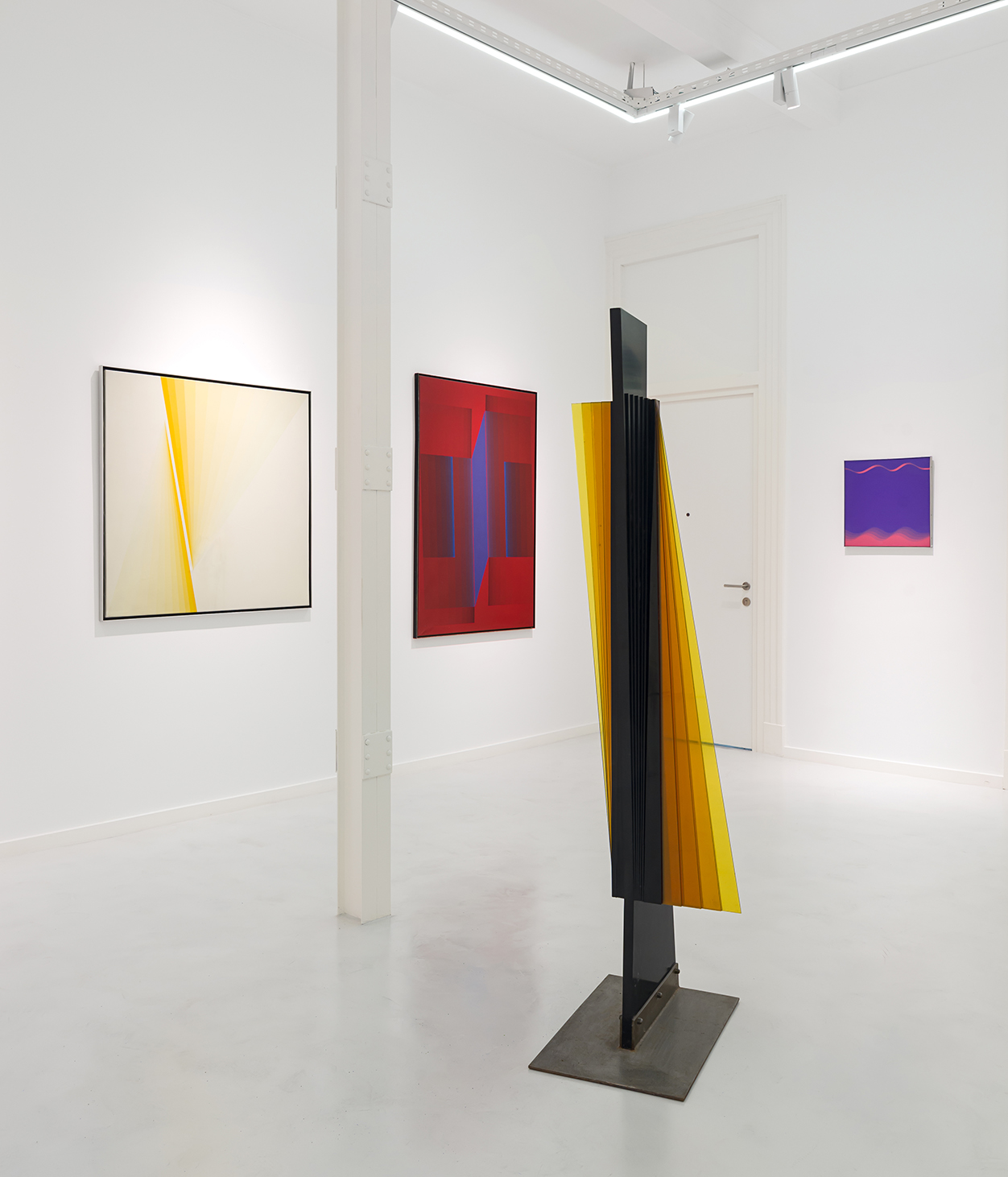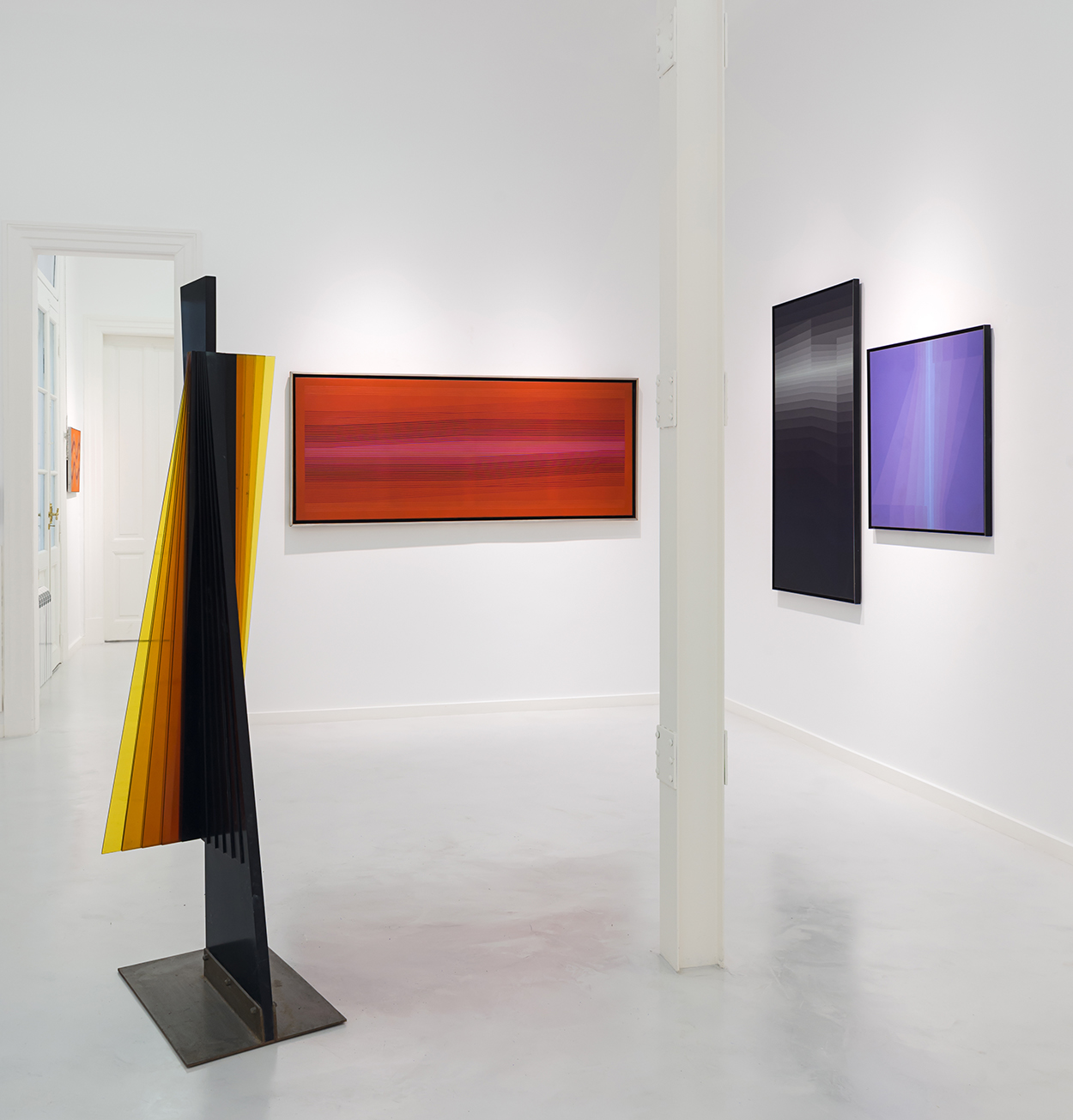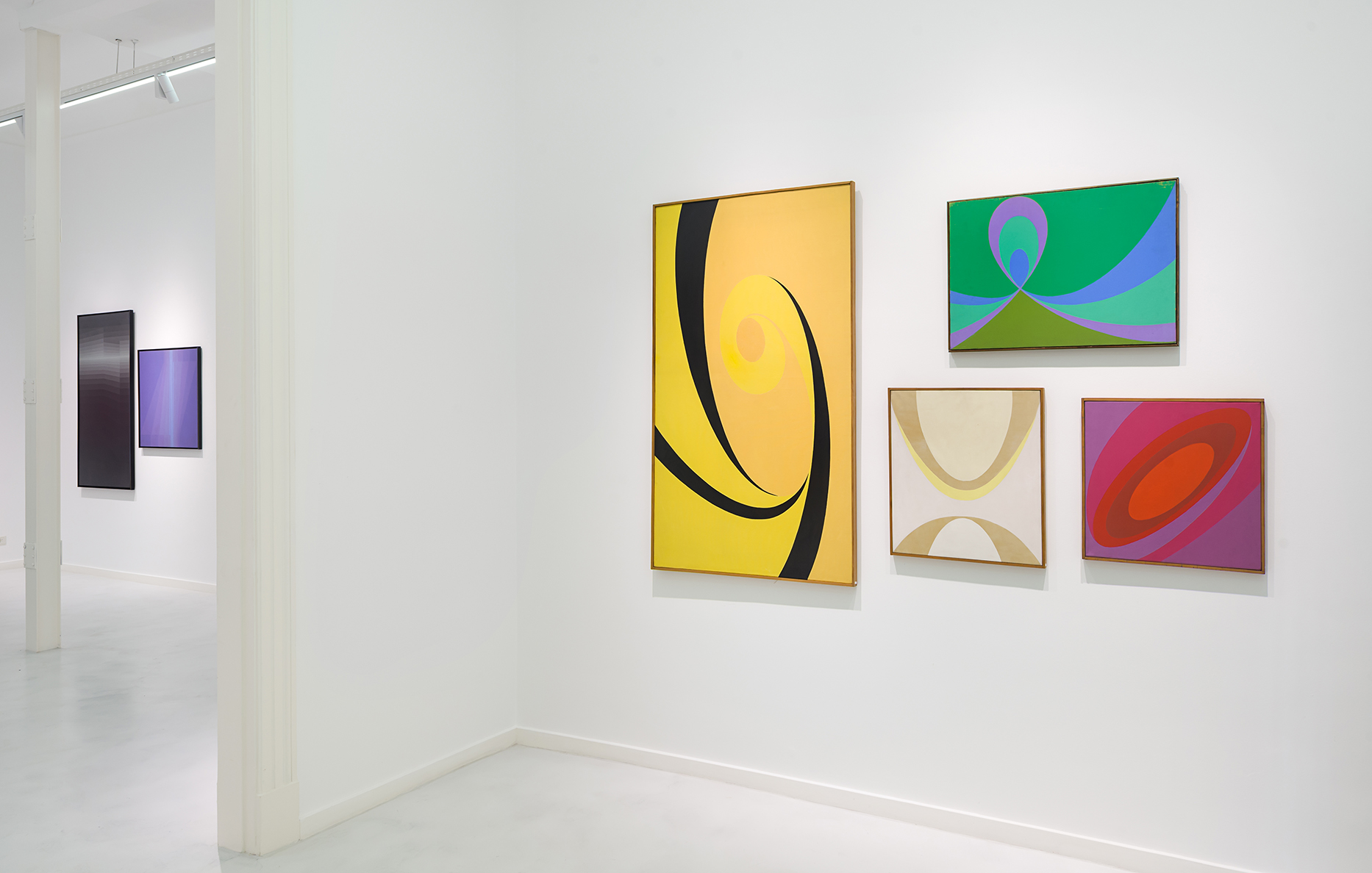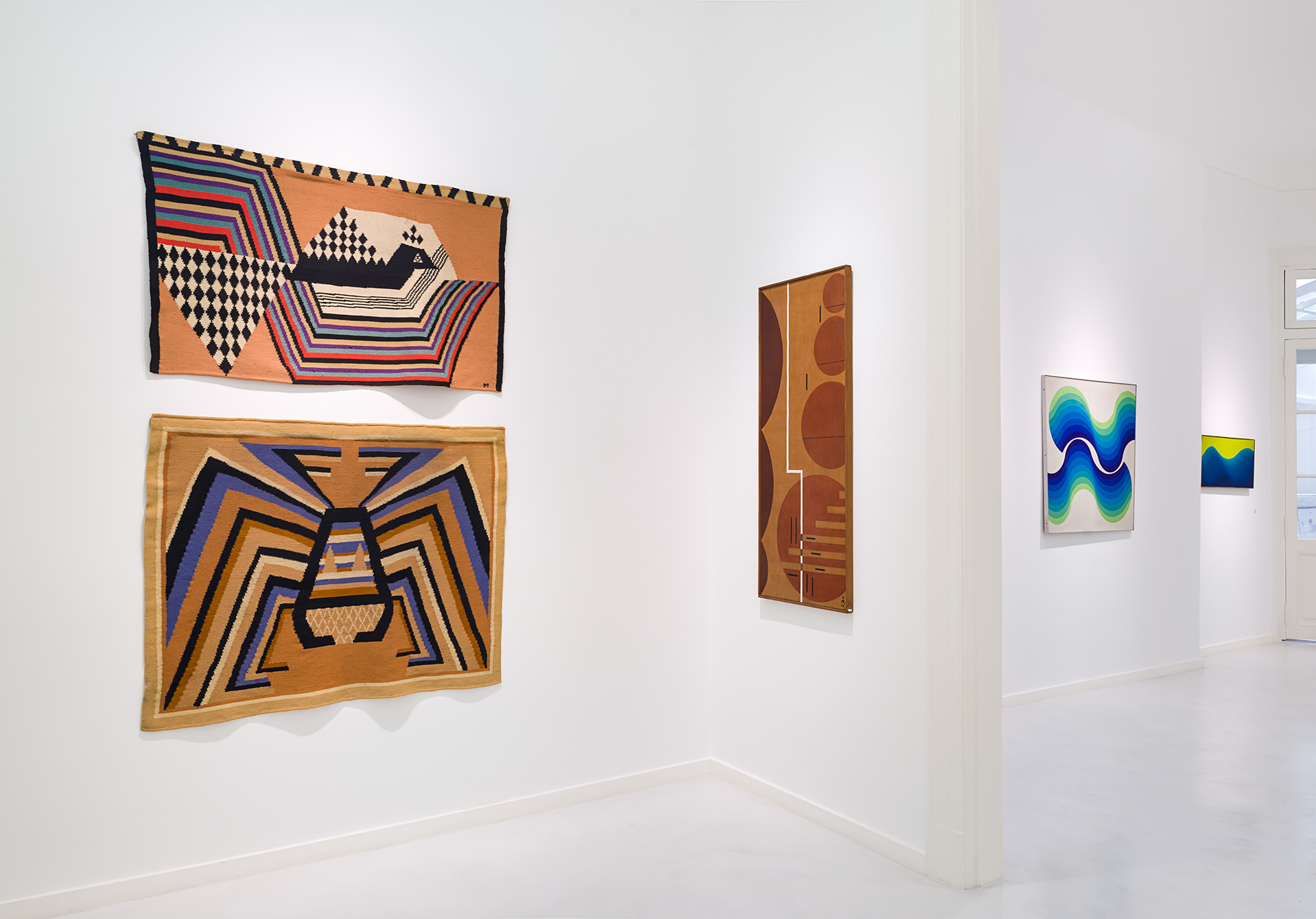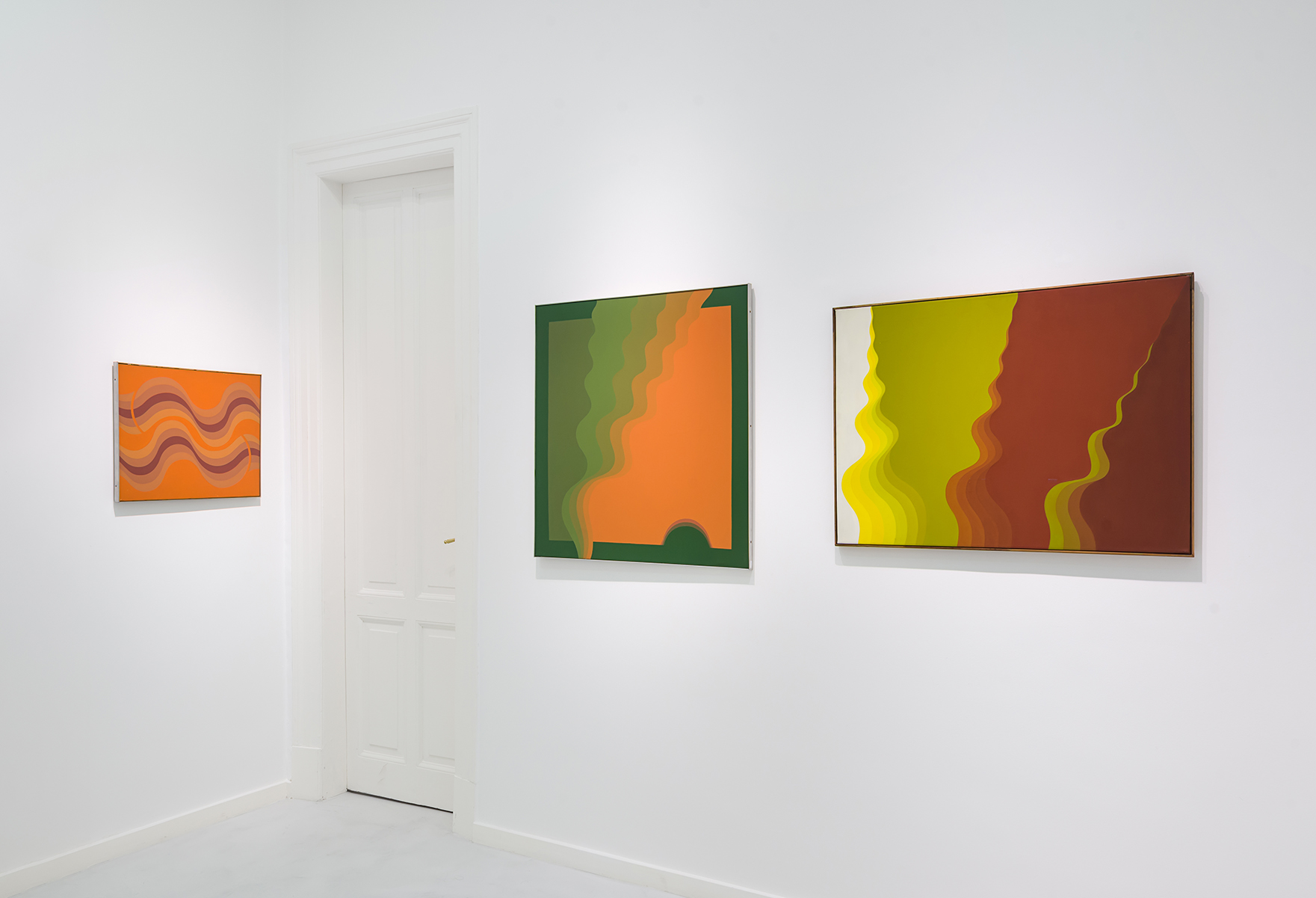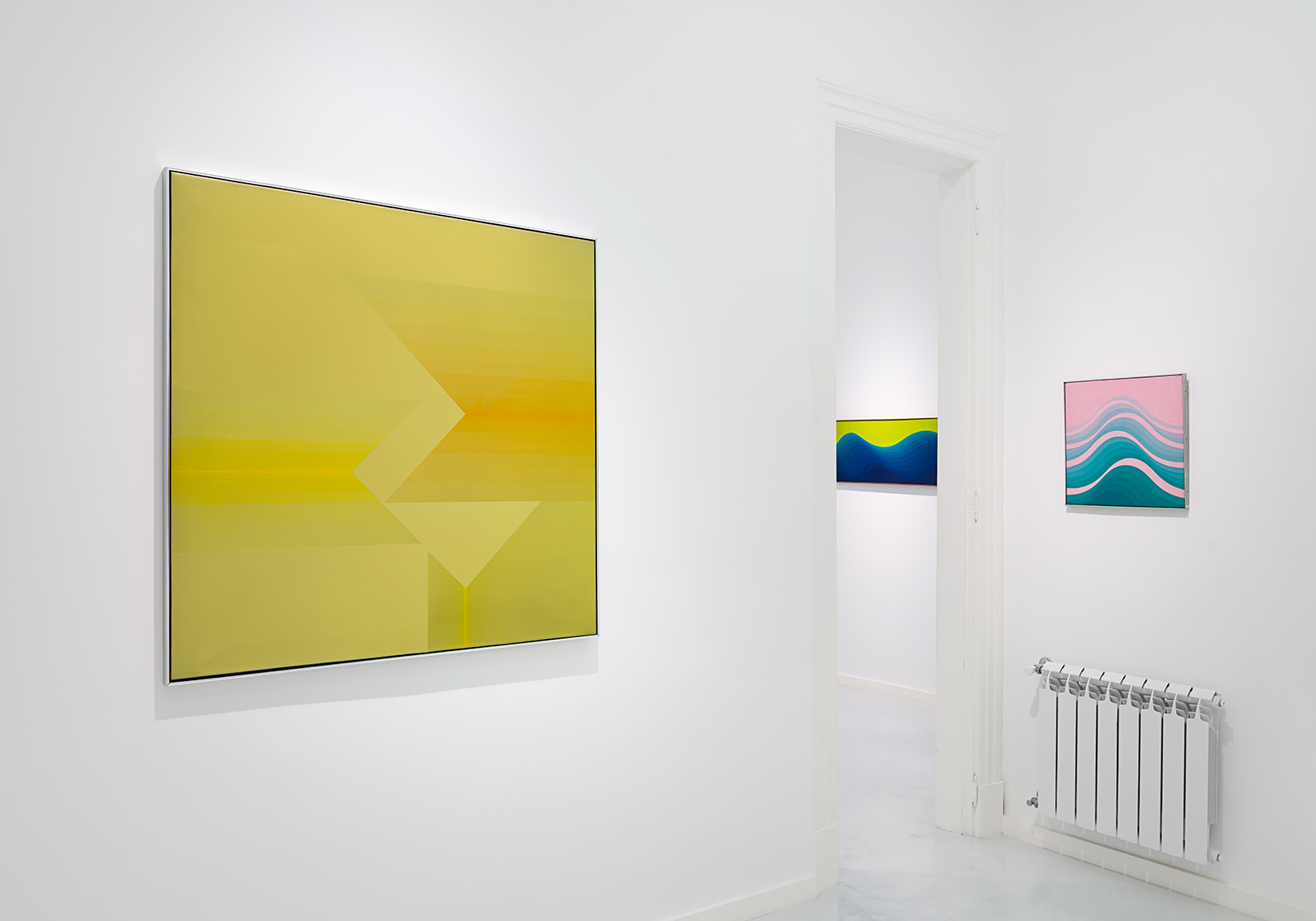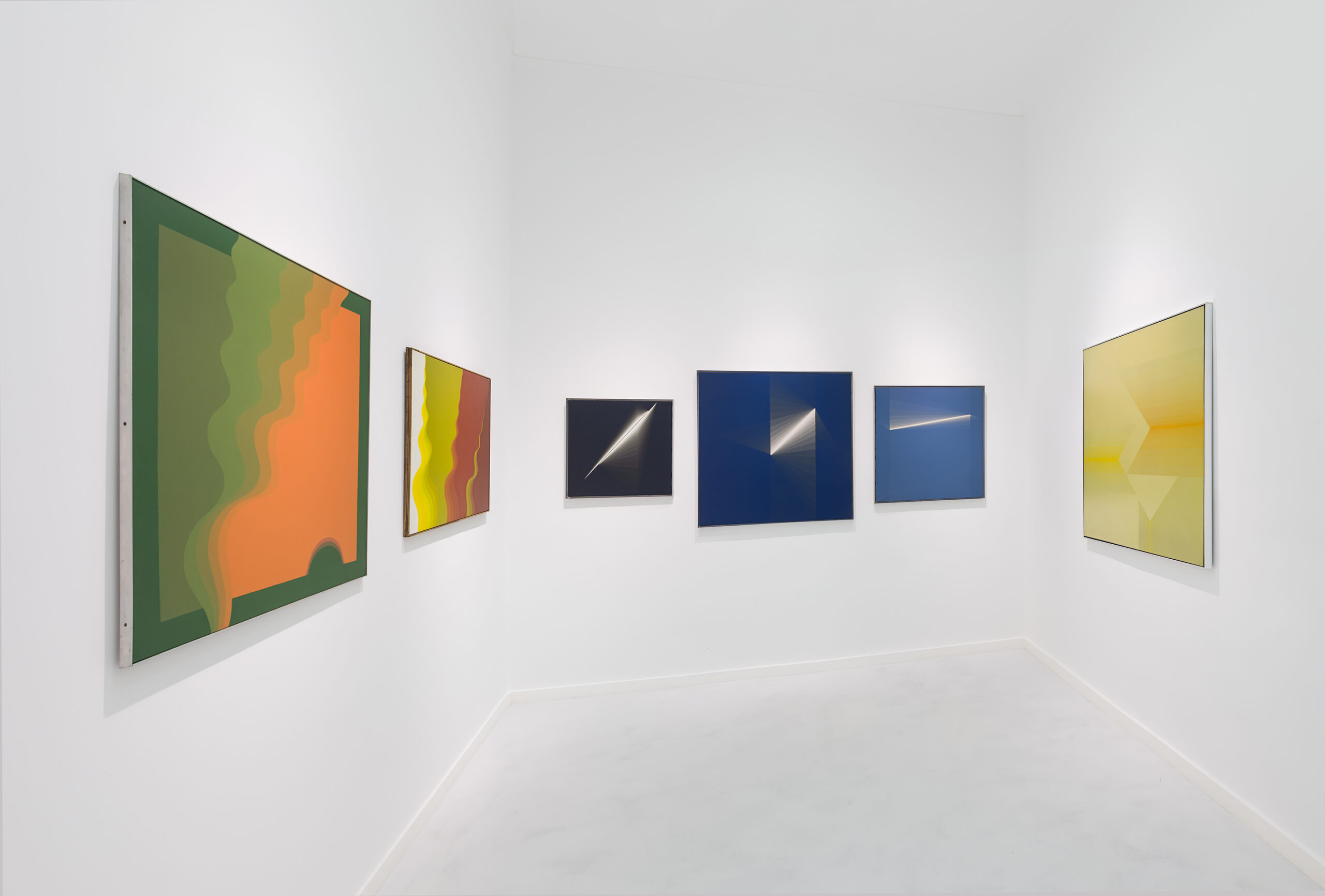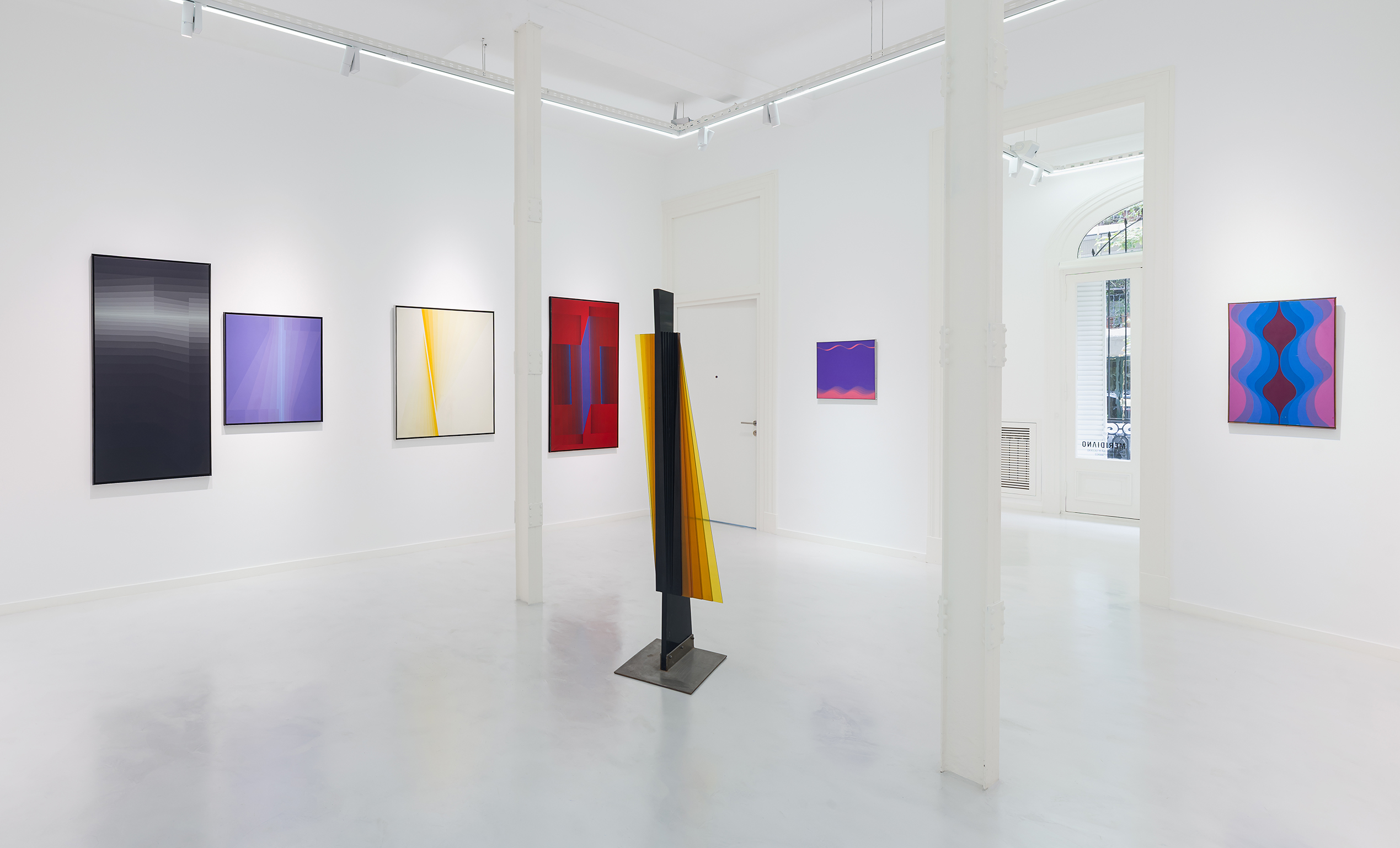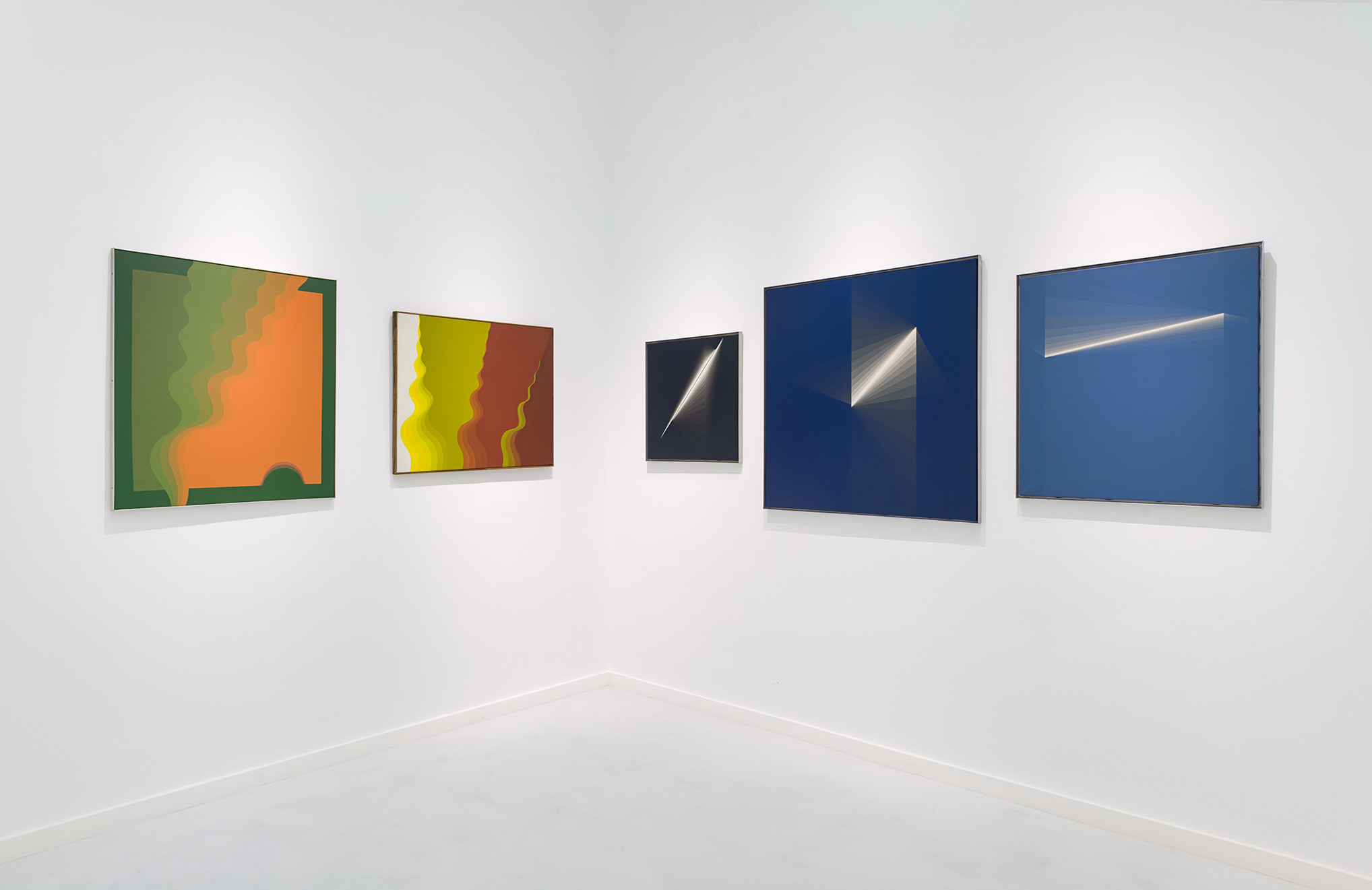Geometrías en paralelo
26 of April to 31 of May
Ary Brizzi and María Martorell
Few artists shared as many spaces and a common vision as Ary Brizzi and María Martorell. Although they were only circumstantially part of a group, criticism and history brought them together.
By the mid-1950s, geometry had become a movement of great intensity, variety and international projection. It was the language of Modernism in painting, design, architecture and the arts in general. In Argentina, a third wave, called neo-concretism, emerged after the tradition forged by artists of the stature of Tomás Maldonado, Alfredo Hlito, Enio Iommi, Gyula Kosice, Arden Quin and Raúl Lozza, among the masters of the 1940s.
María Martorell was born in Salta in 1909. Ary Brizzi, in Buenos Aires in 1930. They belonged to the same artistic generation despite the significant age difference between them. María married young, raised a family and postponed her vocation, like many women of her time. Ary, already at the age of 15, while attending the School of Fine Arts, worked with her father and brother in architecture and interior design. They are two different lives that converge in the same passion, sustained with talent and tenacity. The first time they exhibited together was in 1963, when Romero Brest invited them to the exhibition Eight Constructive Artists, at the National Museum of Fine Arts, together with Manuel Espinosa, Raul Lozza, Eduardo Sabelli, Miguel Angel Vidal and Carlos Silva. That same year, 1963, the panoramic exhibition Del Arte Concreto a la Nueva Tendencia [1]included both artists and categorically identified them with that “new tendency”. A new trend that, starting from the main concepts of concrete art (total abstraction and autonomy of form, abolition of illusionism, scientific aesthetics), ventured to go further, transforming geometry according to the laws of the human eye. The “generative art”[2], optical and kinetic, more linked to Europe, and the color field and the hard edge, of American origin, made up the innovations that both Martorell and Brizzi practiced in those nascent 1960s.[3]
With a similar background, based on Bauhaus methodology, the heritage of Russian constructivism and the external and local tradition of concrete art, Brizzi and Martorell chose to work in series, introducing small variations on a given initial proposition; investigating the syntax of color in relation to forms, real or virtual movement, light and its infinite plastic and symbolic implications.
The artistic model of personalities such as Max Bill – winner in 1952 of the grand prizes at the first South American biennial, the São Paulo Biennial – and Victor Vasarely, who exhibited his work in Buenos Aires in 1958 after participating in the IV Biennial, left their mark on the poetics of geometry and multidisciplinary development. Both artists and designers blurred the boundaries of art.
Martorell witnessed the changes from Europe. He lived there for two years, between 1955 and 1956, and avidly visited museums and workshops of contemporary artists such as Georges Vantongerloo, Nicolas Schöeffer and Jesús Soto, who were embarking on the new geometric directions.
With its vocation for total abstraction, concrete art had left a question floating in the air for the next generation to resolve: what is the subject of painting? Centuries of figurative art, of representation, had put geometry at the crossroads of having to defend itself from the consideration of being a “decorative style”.
The theme of a work of art, Martorell pointed out, is “its harmony, its rhythm. The theme is only the means of directing our attention towards appearances and inviting us to go through those appearances to reach its spirit”.
In line with these reflections, Brizzi asserted that painting is a “unique fact caused by the use of a unique medium”, that the “plastic fact” is given without support in any other reality than itself and its purpose is “to sensitize human perception and its inner vision”.
Thus, was born a painting that is as close to the eye as it is to the unapproachable “inside”, to the spirit of both the artist and his audience. However, this approach without known objects, metaphors, or literary narratives gradually became a language that encapsulated the most basic and yet most sophisticated forms of human perception. Governed by the laws of vision, sensual curves navigate through spaces of clear colors; they attract, repel, change course. A beam of light breaks a plane, shatters into the colors that form it. Circles and lines reverberate in the extreme contrast of black and white. These were just some of the themes of geometry that Martorell and Brizzi worked on, filling their canvases with musical resonances. Precisely music, in its extreme abstraction, was one of the models used to think these compositions detached from representation, as strict and rational as close to emotions.
Artists with a vocation for knowledge, both were self-trained in the reading of diverse materials that concentrated the interests of their time: science, technology, the extension of art to design and daily life.
From the beginning, Brizzi designed and applied his artistic patterns to pieces of graphic art and advertising. The “studies” he carried out between 1955 and 1962 are works in themselves and show that application to communication which, no one doubts anymore, does not reside only in words. Using state-of-the-art materials such as synthetic enamels, then acrylics and innovative metallic alloys, he painted, created sculptures and practiced a craft that he then called “commercial architecture” and that covered the urgent needs of exhibition in the innovative industrial fairs of the economic bonanza of developmentalism.
On this path of art extension, Martorell, enraptured by the medieval tapestries she had seen in France, wondered what would be the destiny of tapestry from Salta, still considered a handicraft. Tuning tradition with modernity would allow her to speak of a contemporary textile art based on pre-Inca motifs, the myths and legends of the Argentine Northwest and the expert hands that still executed them. From this incursion was born the collaboration with Salta artist Carlos Luis “Pajita” García Bez and his weavers, who combined Andean geometry with contemporary geometry in Martorell’s designs; a virtuous encounter that still echoes today and the textile boom.
During the 70’s, in the Acrylics Paolini company awards, Brizzi and Martorell were also keen to create “useful” (design) and “useless” (artistic) objects with the precious material, acrylic, which connoted the beauty and practicality of modern life.
At the same time as these explorations, in 1966, Brizzi and Martorell were part of Grupo 13 (G13), which had its presentation in Buenos Aires [4]and represented a true compendium of the geometric tendencies of the time. The exhibition received excellent comments, such as those of the critic Cayetano Córdova Iturburu, who saw in its excellence the counterpart of the Braque Prize, dedicated to celebrating the “nothings of the Pops”.[5]
Indeed, the new geometry was contemporary to other trends in figuration such as pop or the youth of the “urban myths”, as the French critic Pierre Restany described them.
That same year, Brizzi and Martorell participated in 11 Pintores Constructivos, in which they coincided once again with Espinosa, Mac Entyre and Vidal. Obviously, these coincidences are not coincidental-nor is the current one we are presenting-since, unlike other trends in contemporary art, geometry was a space of confluences rather than differences. It signified an international language, a sort of Esperanto of forms, for which Europeans and Americans in general had been fighting since the beginning of the twentieth century; a language that, like all languages, gradually incorporated “words” that made it as accessible as figuration had been traditionally. Light, the pictorial representation of light, was one of them. The scales of values, also called degradé, burst into the work of Brizzi and Martorell to blur planes, turn color into atmosphere, deny the two-dimensionality of the support or launch into a world of visual and symbolic suggestions that were previously labeled as naturalistic.
Geometry accompanies us today as evidence of a place of mastery in Argentine art. It was a trend that triumphed at international level, which was loaded with new meanings accompanying the times, but which, essentially, speaks from modernity.
María José Herrera
Historian and curator. Author of the book Ary Brizzi. The Harmony of Modernity (in press 2023) and co-author of María Martorell. The energy of color (2013)
[1] Organized by the Museum of Modern Art of the city of Buenos Aires (MAM).
[2] Creado por Eduardo Mac Entyre y Miguel Ángel Vidal en 1960.
[3] They also coincided in Beyond Geometry (1967), an anthological exhibition that introduced the “new sculpture”, the primary structures, held at the Di Tella Institute, on Florida Street.
[4] Exhibiting with Armando Durante, Manuel Espinosa, María Juana Heras Velasco, Jorge Lezama, Mac Entyre, César Paternosto, Alejandro Puente, Sabelli, Carlos Silva, María Simón and Vidal.
[5] Cayetano Córdova Iturburu, “Dos caras de una medalla”, El Mundo newspaper, Buenos Aires, July 31, 1966.
